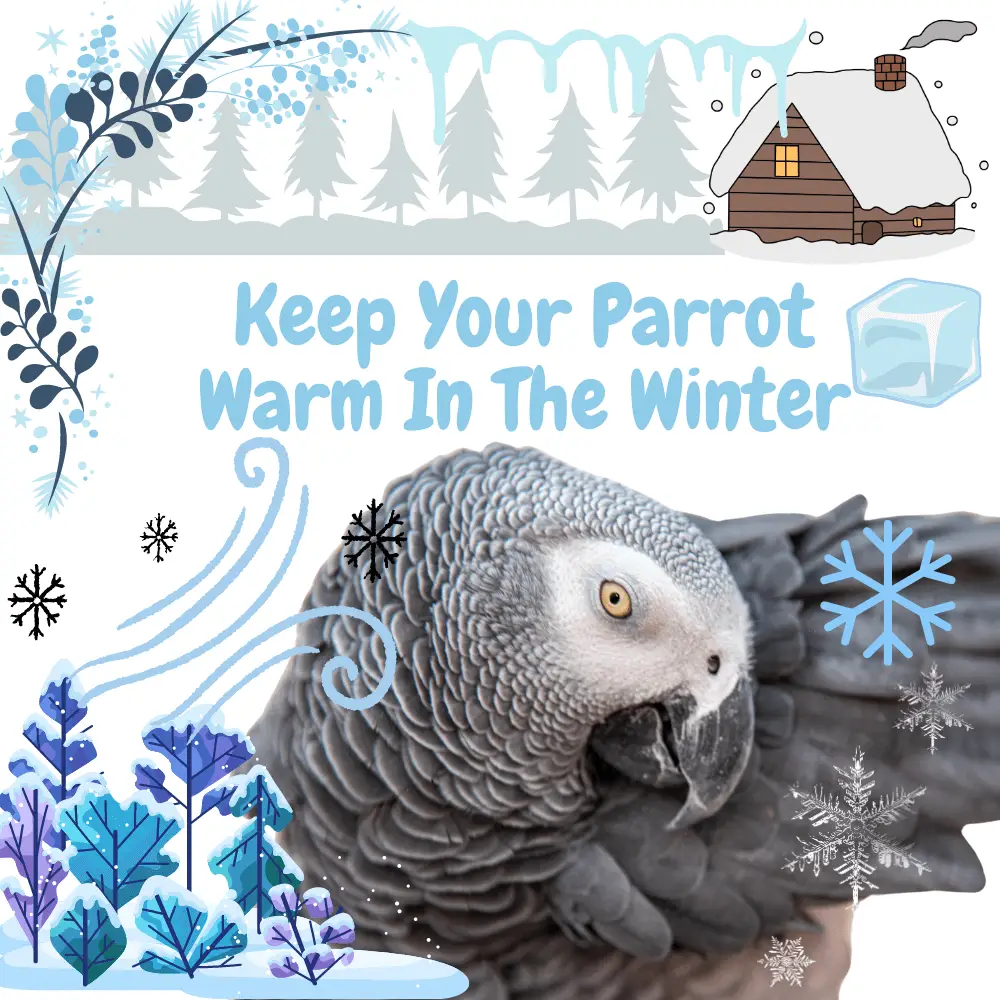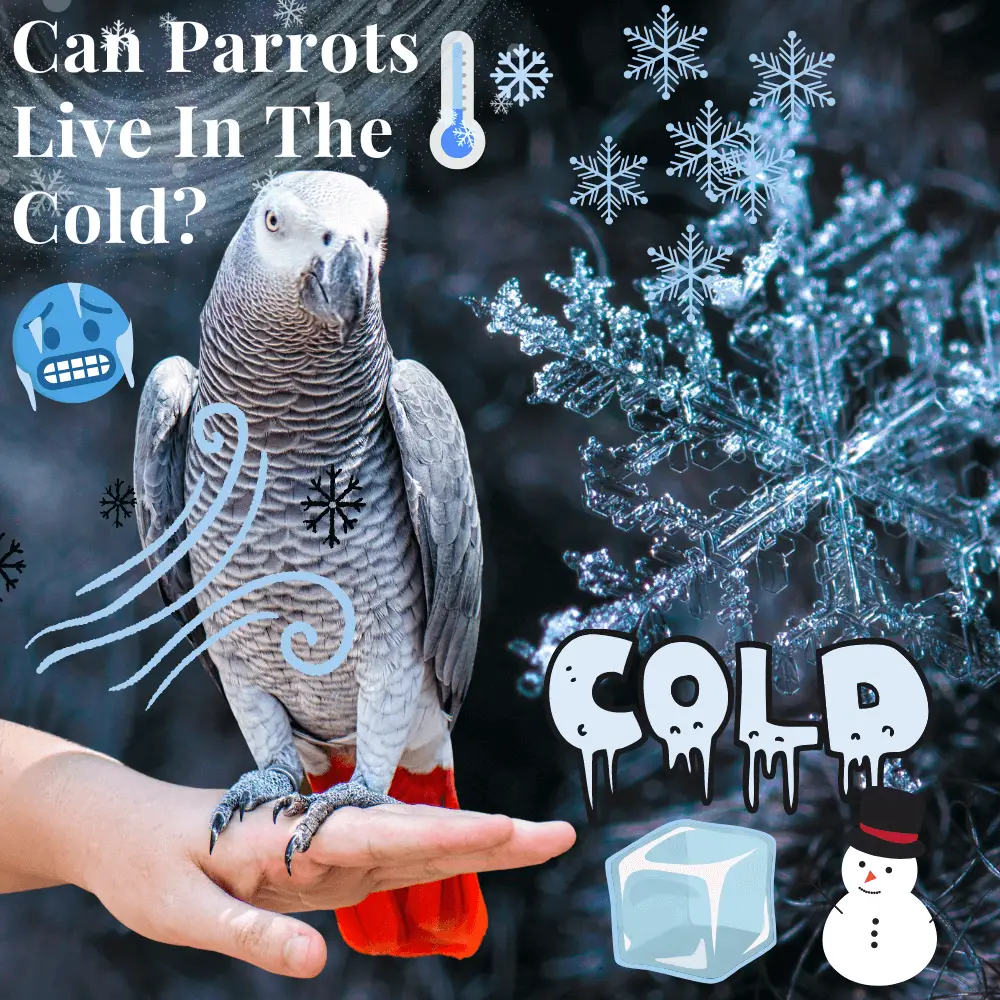
Keep Your Parrot Warm in the Winter: Winter is coming… Facing the cold is often an ordeal for our parrots living outdoors. Here are 10 solutions to help our birds have a better winter.
Small species are obviously more sensitive to harsh winters.
A bird that puffs out its plumage and looks like a round feather ball, covering all of its legs and tucking its head into the shoulders has a typical cold-fighting position. The extremities (fingers, legs, wings) are the most fragile in winter.
Good winter for a parrot
All you need to know about the good Strategies for a good winter for your parrot
Keep Your Parrot Warm in the Winter

1 . Cover the cage
The cold enters and leaves the aviary through the roof. In order to stop this calorimetric movement, you can cover the roof, in whole or on 2/3 with a wintering veil. This cover will allow the parrots to keep some heat in their aviary. You can also cover the cage only at night to let the birds make the most of the light.
2 . The position of the aviary
The position of the aviary is important. The establishment of an aviary in the South is always to be encouraged.
In the case of a movable aviary, you can also stick it against a wall (preferably south or southwest).
3. Heating
Heat lamps are a very good way to provide heating for a bird when it is cold. Heat lamps have the advantage of being easily movable. They represent a modest financial investment of about 20 $. Prefer ceramic bulbs, more expensive to buy, but bring better heat, more diffuse. Infrared bulbs provide lower-quality heat and the light they scatter can disturb the parrot. On the other hand, it is immediately noticed when they are grilled.
4. Heated perches
The heated perches are equipped with a resistor delivering gentle heat. This allows the paws to maintain a correct temperature and not freeze. They should only be used in extreme colds, as long-term use can cause blood circulation problems.
5. The tents
Comfort tents are usually made of fabric and suspended in cages. They are suitable for all cages and all species (different sizes exist). They are generally appreciated by birds because they feel safe. They also offer the bird some comfort in winter because they retain heat well.
6. The bottom of the cage
A cage bottom is an important parameter for insulating an aviary from the cold. Choose a natural litter (hemp mulch, straw, wood chips ….). Opt for a good thickness, about fifteen centimeters is a good average. This will isolate the birds from the cold coming from the ground.
7. Toys
Having fun is good physical activity, and physical activity increases metabolism and body temperature. A parrot that has toys to occupy itself will have more activity and therefore less cold. Physical activity is very important in winter.
Keep Your Parrot Warm in the Winter
8. Group birds together
In groups, the birds can enjoy each other’s warmth. This setting depends on the animal collection you own, but grouping birds for the winter can be a good cold-fighting strategy. However, make sure you have enough space, and species that can be tolerated…
9. A rich diet
Birds living outdoors have a huge need for energy (and therefore feeding). In winter, these birds need a lot of energy to maintain their body temperature (this is called thermoregulation), they monopolize about 1/5 more energy than a bird living indoors.
A rich diet is a good way to stimulate the metabolism of the bird and thus stimulate its body temperature. It is wise to bring a richer meal at the end of the day (corn is a good element to add to the ration for example).
Les noix (noisette, Grenoble, pécan, amandes…) et les fruits secs (dattes, raisins…) sont d’excellents compléments lors des périodes rigoureuses.
En hiver, vous devez toujours avoir des restes en quantité suffisantes dans vos gamelles.
3. A building





















